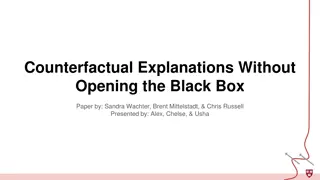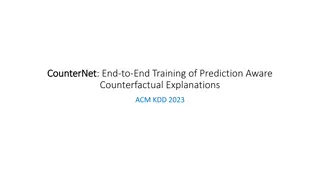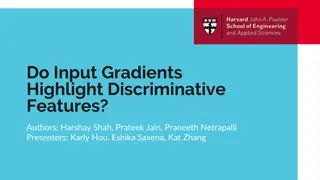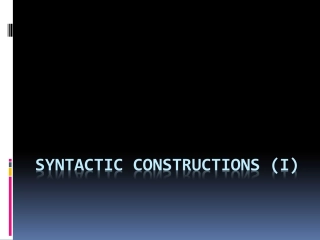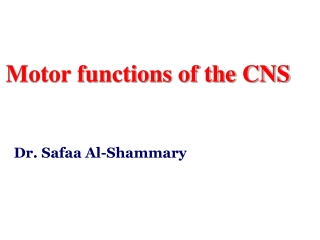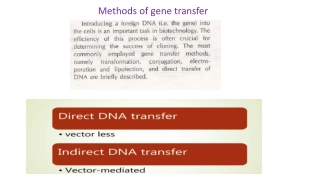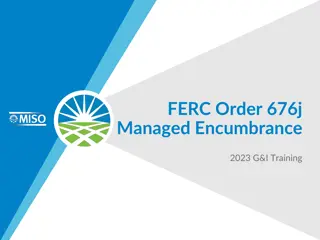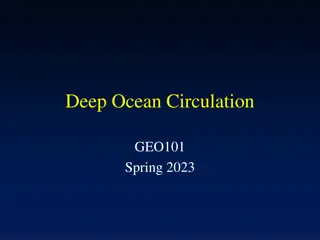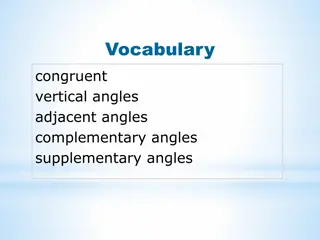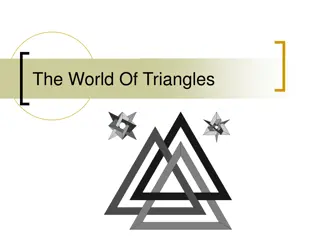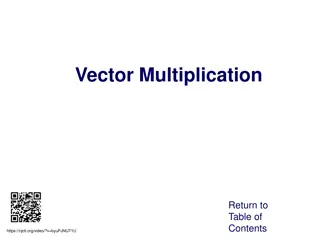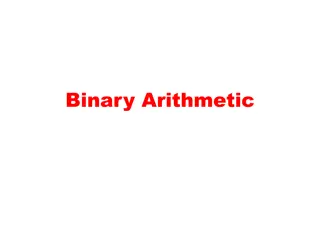Enhancing Counterfactual Explanations for AI Interpretability
Explore how to improve interpretability of AI models through generating counterfactual explanations with minimal perturbations and realistic, actionable suggestions. Addressing limitations of current methods and the need for a more flexible generative framework to ensure explanations are clear, concise, and relevant.
- AI Interpretability
- Counterfactual Explanations
- Generative Framework
- Model Explanation
- Machine Learning
Download Presentation
Please find below an Image/Link to download the presentation.
The content on the website is provided AS IS for your information and personal use only. It may not be sold, licensed, or shared on other websites without obtaining consent from the author. Download presentation by click this link. If you encounter any issues during the download, it is possible that the publisher has removed the file from their server.
Presentation Transcript
Generating Interpretable Counterfactual Explanations By Implicit Generating Interpretable Counterfactual Explanations By Implicit Minimisation Minimisation of Epistemic and Aleatoric Uncertainties of Epistemic and Aleatoric Uncertainties University of Oxford University of Oxford Artificial Intelligence and Statistics (AISTAT 21) Artificial Intelligence and Statistics (AISTAT 21) Cited 33 33 times
Introducing Counterfactual Explanations Counterfactual Explanations A different type of suggestion to change the class A counterfactual explanation is a perturbation of the input to generate a different output y by the same algorithm. Loan approval- age 26y gender F salary $100k residency local credit score 700 loan amount 1 million loan term 20y XT Not approved age 26y gender F salary $150k residency credit score 700 loan amount 1 million loan term local 20y XT*
Problem with existing methods Need of an auxiliary generative framework (GEN) The GEN works as a black-box, we have limited control over the generated CFs Might produce out of distribution CFs CF GENs are good for binary classification models, bad for multi-class classification problems, increases engineering overhead, tunable params May require multiple GENs
Problem with existing methods Brings in unrealism and ambiguity Some datasets are not good for using GENs In Out
Desired properties of CFs Must be realistic and actionable Unrealistic If the garage was rebuilt into 100 small rooms, then it is likely the house could be sold for $300,000 Realistic if the garage was rebuilt into an ensuite bedroom, then it is likely the house could be sold for $300,000 ? = ? + --> Perturbation must be minimal 1 repainting the kitchen 2 repainting both the kitchen and the bathroom As both obtain the desired outcome, 1 is more desirable as it is more concise Minimal perturbation Unambiguous explanation Must be understandable from human perspective, must not have multiple interpretations GENs involve non-convex optimization and repeated evaluations of a potentially expensive model, thus run time is a significant concern Small Runtime
Reduce Epistemic and Aleatoric Uncertainty Epistemic Uncertainty Occurs due to lack of knowledge/information about the data If training data is sparse, the regions with less training instances introduces Epistemic Uncertainty Related to unrealism Samples close to the training instances are less uncertain CF Aleatoric Uncertainty Inherent to the variability of the data Most prominent close to the decision boundary Related to ambiguity CF CF
How to produce desired CFs Measure of lack of explainability ? = ????????? + ambiguity = epistemic + aleatoric uncertainty Samples close to the training instances have less epistemic uncertainty Where, ??(.)is the training data distribution Explanations which are likely under the distribution of the training data will appear familiar to the user and thus realistic. ? or something close to it exist in the ? side
How to produce desired CFs Samples close to the training instances have less epistemic uncertainty Where, ??(.)is the training data distribution Explanations which are likely under the distribution of the training data will appear familiar to the user and thus realistic. ? or something close to it exist in the ? side One way to increase ??(? |? ) is using ensemble of deep neural networks Reduction of Variance Improved generalization Combining diverse models Robustness against outliers Uncertainty: entropy Predictive entropy
How to produce desired CFs Uncertainty: entropy Predictive entropy yields How to make sure perturbation is minimum? Identify the feature that impacts the most and change it Perform adversarial training Adversarial training improves uncertainty estimation, both on in-distribution and out-of-distribution inputs Augmenting the training set with adversarial examples during training ensures that the model does not focus on noise when learning features for classification.
How to produce desired CFs Iterate until minimum confidence level/max iteration is reached/
Datasets MNIST Grayscale images of handwritten digits (0-9) Objective: What needs to be done to change image classification (7 to 1, 9 to 4) Classifier is 98.5% accurate Breast Cancer Wisconsin Diagnostic Dataset Tabular dataset, contains various measurements of a cell sample from a tumour, binary diagnosis of benign or malignant. Objective: Get CFs that changes malignant to benign (or vice versa) Classifier is 96.9% accurate Boston Housing Dataset Another tabular dataset, contains information about housings in a suburb of Boston Objective: What needs to be done to increase the price from below median to above Classifier is 86.3% accurate
Evaluating the CFs Comparable Methods Van Looveren and Klaise (VLK 2019): An autoencoder (GEN) based approach for CF generation Jacobian-based Saliency Map Attack (JSMA): Metric IM1: Reconstruction loss of an autoencoder trained on target class Lower score better ? ? Reconstruction loss of an autoencoder trained on original class If numerator < denominator, generated x is closer to the target class If denominator < numerator, generated x is still closer to the source class
Evaluating the CFs Ablation Study 1. Verify if adversarial training helps 2. How number of models in ensemble learning impacts the performance Visualization


